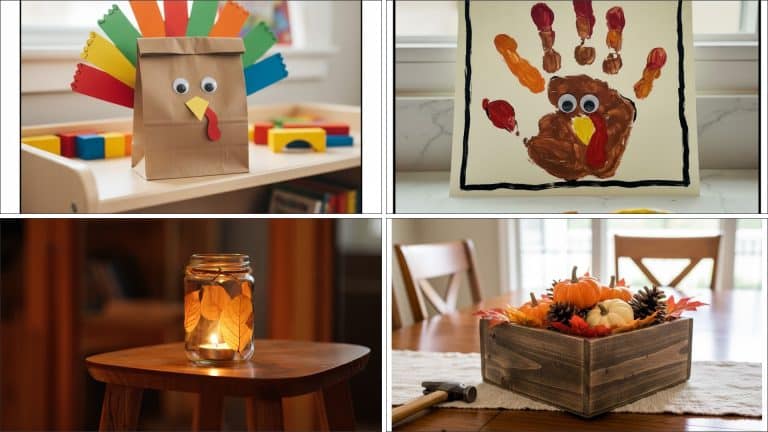A sunroom is a special bridge between your indoor and outdoor worlds—a peaceful place where natural light pours in through glass walls.
When filled with carefully chosen plants, this space transforms into something truly special.
This blog covers:
- How to create your green sanctuary by selecting the right plants for sunroom conditions.
- Arranging them in visually pleasing ways.
- And maintaining their health year-round.
If you have a newly built sunroom or are looking to refresh an existing one, these plant suggestions and care tips will help you create a living space that feels alive, fresh, and connected to nature, no matter the season outside.
Why Plants are Ideal for Sunrooms
Sunrooms offer the perfect setting for houseplants due to their unique combination of features. These glass-enclosed spaces provide plenty of natural sunlight that filters through windows, creating bright, indirect light that most indoor plants love.
This gentle light allows plants to photosynthesize effectively without the harsh, direct sun that might burn their leaves. The consistent warmth in sunrooms also makes plants happy.
Unlike other parts of your home that might experience temperature shifts, sunrooms maintain a more steady climate that many houseplants prefer. This warmth helps stimulate growth and keeps tropical varieties comfortable.
Sunrooms bridge the gap between indoor comfort and outdoor views. Plants placed in these spaces can soak up light while being protected from outdoor threats like pests, extreme weather, and temperature drops.
This balance creates ideal growing conditions that help your plants thrive year-round.
The generous window space in a sunroom also allows you to showcase your plant collection beautifully, creating a green oasis that connects you with nature while remaining in the comfort of your home.
Best Plants for Your Sunroom
Choosing the right plants for your sunroom can turn it into a lush, green haven. Many plants, from flowering beauties to sturdy foliage plants, do well in these light-filled spaces.
Here are five excellent options that will grow happily in your sunroom while adding beauty and life to the space.
1. Orchids

Orchids love the bright, filtered light and warm conditions of a sunroom. These striking flowering plants need indirect sunlight and do well with some humidity.
Water them sparingly, letting the soil dry between waterings. Their long-lasting blooms add color and beauty to your sunroom for weeks or months at a time.
2. Peace Lilies

Peace lilies clean the air while adding simple beauty to your sunroom. They prefer spots with indirect light and regular watering.
These hardy plants show you when they need water by drooping slightly. Their glossy green leaves and white “flowers” create an eye-catching display that stays beautiful year-round.
3. Spider Plants

Spider plants are among the easiest plants to grow in a sunroom. They adjust well to different light levels and only need watering when the soil feels dry.
These plants grow quickly and produce baby plants on long stems, which you can clip off and pot to expand your collection with minimal effort.
4. African Violets

African violets produce pretty, colorful flowers throughout the year when placed in a sunroom with bright, indirect light.
They prefer consistent temperatures and slightly moist soil. These compact plants work well on tables or shelves, allowing you to create lovely displays without taking up much space.
5. Christmas Cactus

When placed in a sunroom with the right conditions, Christmas cacti offer beautiful blooms in winter. They need bright but indirect light and slightly moist soil.
Unlike desert cacti, they come from forests and don’t like to dry out completely. Their trailing stems with flat segments look good even when not flowering.
Creative Ways to Style Your Sunroom with Plants
Adding plants to your sunroom isn’t just about growing them—it’s about creating a pleasant space that feels connected to nature.
Here are five ways to arrange your plants to make your sunroom both practical and visually appealing.
1. Create a Plant Wall

Make use of your vertical space by installing shelves or a plant rack on a wall. This method allows you to display many plants without using floor space.
Arrange plants of different sizes and textures in rows, with trailing varieties on top shelves to create visual interest as they grow downward.
2. Hang Plants from the Ceiling

Ceiling-hung plants add dimension to your sunroom while keeping surfaces clear. Use macramé hangers or simple hook systems to suspend plants at varying heights.
Spider plants, pothos, and ferns work well as hanging plants, creating a lush canopy effect that fills empty air space.
3. Use Large Focal Plants

Place larger plants, such as palms or fig trees, in key spots to create visual impact. These larger plants work well in corners or as centerpieces.
They provide structure to your plant setup and create a sense of being surrounded by nature. Pair them with smaller plants for balance.
4. Mix and Match Pot Styles

Containers can add style to your plant display. Try clay pots for a natural look, metal planters for a modern touch, or woven baskets for warmth.
Using pots that share a color theme or material helps create a pulled-together look, even with different plant types.
5. Create a Cozy Reading Corner with Plants

Please set up a comfortable chair near a bright spot in your sunroom and surround it with plants of different heights.
A tall plant behind the chair, small plants on a side table, and perhaps a hanging plant nearby will create a green nook perfect for reading or simply sitting quietly.
Essential Care Tips for Sunroom Plants
Taking care of plants in a sunroom requires special attention to light, temperature, and humidity. While sunrooms offer ideal growing conditions, they also present unique challenges due to their glass walls and ceilings.
These tips will help you keep your sunroom plants healthy and thriving throughout the year.
Watering Tips
Plants in sunrooms often need more frequent watering than those in other parts of the home, as the extra light and heat can dry the soil quickly.
- Check plants daily by touching the soil—water when the top inch feels dry.
- Water thoroughly until water runs from drainage holes, but avoid letting plants sit in standing water.
- Consider using self-watering pots or water globes during hot periods when soil dries faster.
Light Requirements
Not all sunroom light is equal. South-facing sunrooms get the most intense light, while north-facing ones receive gentle, indirect light.
- Place sun-loving plants like hibiscus and begonias where they’ll get the most light.
- Keep shade-preferring plants like peace lilies and ferns in corners or spots that receive filtered light.
- Watch for seasonal changes. As the sun’s angle shifts throughout the year, you may need to move plants.
Humidity Control
Many popular houseplants come from humid environments and need similar conditions to thrive.
- Boost humidity in your sunroom by grouping plants, which creates a small microclimate.
- Use humidity trays filled with pebbles and water under your plants.
- During winter heating, consider using a small humidifier.
Most importantly, watch for signs of low humidity—crispy leaf edges or brown tips—and adjust your care accordingly.
Troubleshooting Common Plant Problems in Sunrooms
Even in the ideal growing conditions of a sunroom, plants can face challenges. Here’s how to spot common problems and fix them before they harm your plants.
Yellow Leaves
Yellow leaves typically indicate watering problems. Check if the soil stays wet for days (overwatering) or becomes completely dry (underwatering) and adjust accordingly.
Leaves can also turn yellow in sunrooms from too much direct sunlight. If this happens, move the plants to a spot with filtered light. Yellowing lower leaves might be natural aging, especially on older plants.
Mold & Mildew
Mold appears when moisture meets poor air circulation. To improve airflow, use a small fan, water plants in the morning so they dry by evening, and remove affected leaves promptly.
For soil mold, scrape off the top inch and replace it with fresh potting mix. Properly spacing between plants also prevents moisture buildup.
Pests
Common sunroom pests include spider mites, mealybugs, and aphids. Check plants weekly, looking under leaves for tiny dots or sticky residue. Treat affected plants with insecticidal soap or neem oil.
For prevention, inspect new plants before bringing them into your sunroom, and occasionally wipe down leaves with a damp cloth to remove dust and potential pests.
Conclusion
Sunrooms and plants make perfect partners, creating a special spot where you can enjoy greenery year-round.
With the right plant choices and care habits, your sunroom can become a thriving indoor garden that brings joy and beauty to your home.
Start small with hardy options like spider plants or peace lilies, then add variety as you build confidence. Try different arrangements—hanging plants, shelf displays, or groupings of pots—to find what works in your space.
Your sunroom has the potential to become your favorite room in the house, a green retreat where you can relax surrounded by healthy, happy plants.













